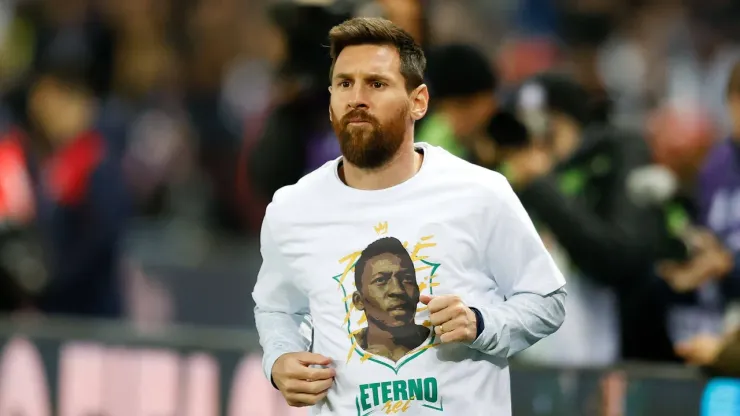Nearly 50 years before Lionel Messi joined Inter Miami, the world’s greatest soccer player at the time, Pele, shocked the world by coming out of retirement to sign with the North American Soccer League’s New York Cosmos. These two transfers, separated by five decades, provide an intriguing comparison of the influence of global superstars. That impact has evolved within the country and the sport.
Pele’s instant impact
Pele arrived in New York in 1975 at the age of 34. At the time, soccer had little foothold in the American sports landscape. The NASL was still struggling for relevance, with matches attracting only a few thousand fans. Pele’s signing immediately boosted the Cosmos’ prestige. Match attendance skyrocketed into the five figures as fans flocked to see the Brazilian legend in action. During his three seasons with the Cosmos, Pele scored 37 goals in 64 appearances. He led the squad to the 1977 NASL Championship title in his final match. Pele’s combination of speed, power, and grace made him shine even on poor pitches and with limited sports science support.
More importantly, Pele’s charisma, flair, and larger-than-life persona gave soccer unprecedented appeal and helped launch the first boom in American soccer interest. His Cosmos became a top draw for celebrities and media attention while also touring internationally as soccer ambassadors. Although Pele retired after 1977, the legacy of excitement and expanded youth participation he spurred laid the foundation for the 1994 World Cup held in the United States.
Messi’s impact
In contrast, Messi’s arrival in 2023 coincides with soccer being firmly implanted in the American sports scene. MLS has expanded to 28 teams with many playing in soccer-specific stadiums. The US men’s and women’s national teams are consistent fixtures in their respective World Cups. And soccer trails only American football and basketball in youth participation.
At 35 years old, Messi joined Inter Miami six months removed from leading Argentina to glory at the 2022 World Cup. His signing has already led to increased ticket sales, sponsorship deals, and greater media coverage for Inter Miami. It has also boosted subscribers and viewership for Apple’s MLS streaming package. Through six matches so far, Messi has scored nine goals and helped lead Miami to the final of the Leagues Cup tournament. Messi’s low center of gravity, tight dribbling, and split-second decision-making helped him dominate and produce jaw-dropping moments in the modern era.
Pele planted the seeds that Messi now grows in American soccer
Pele’s superstardom almost 50 years ago was enough to attract fans to a fledgling league. Now, Messi’s presence accelerates the commercial growth of an established league and teams. The NASL did grow after Pele’s departure. It was not a question of Pele but a poorly run league structure. Yet, the youth participation it created was the seed that ultimately led to the MLS era.
MLS clubs now have the reach and resources to attract not just aging legends. Instead, the league can bring in global talents in their prime. The increased interest and revenue generated by Messi provide long-term benefits for continued league investment and development. Beyond their impact on American soccer, Pele and Messi’s lasting legacies will be their otherworldly skills that revolutionized the sport. They set new standards of greatness in their respective eras.
Initially, Pele paved the roads. Now, Messi’s arrival signifies American soccer truly entering the global mainstream. It represents the fruits of decades of growth. Both men have the unmatched ability to transcend even their soccer talents to advance the sport globally. For American soccer, the king and the GOAT are two regal pillars of the beautiful game.
PHOTO: IMAGO + HMB-Media
200+ Channels With Sports & News
- Starting price: $33/mo. for fubo Latino Package
- Watch Premier League, Women’s World Cup, Euro 2024 & Gold Cup
The New Home of MLS
- Price: $14.99/mo. for MLS Season Pass
- Watch every MLS game including playoffs & Leagues Cup
Many Sports & ESPN Originals
- Price: $10.99/mo. (or get ESPN+, Hulu & Disney+ for $14.99/mo.)
- Features Bundesliga, LaLiga, Championship, & FA Cup
2,000+ soccer games per year
- Price: $5.99/mo
- Features Champions League, Serie A, Europa League & Brasileirāo
175 Premier League Games & PL TV
- Starting price: $5.99/mo. for Peacock Premium
- Watch 175 exclusive EPL games per season






